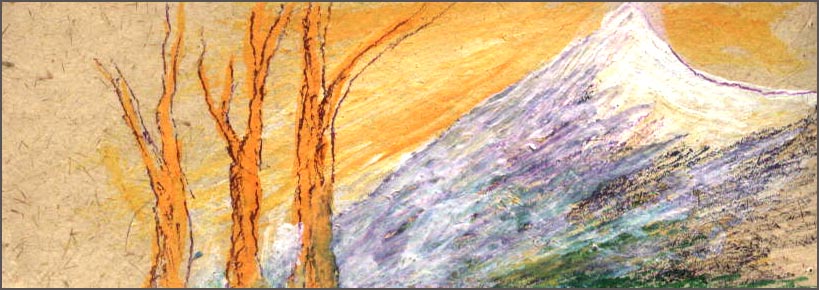

THE IMPACT OF BUDDHIST SCULPTURE AND PAINTING ON ANDHRA Dr.Sanjiva Dev |
To live is to desire to be happy, no doubt, but relentlessly would suffering accompany the happiness as shadow accompanies the substance. In fact, suffering reigns supreme in life and it is very few who appear to be happy devoid of suffering. From tome immemorial, all living beings, especially human beings, have been afraid of suffering. The majority of people live in suffering whereas the minority are happy, or apparently happy. Suffering is a sort of the trauma of incarceration with a sensation of suffocation. Suffering includes poverty, disease, decay and death; suffering includes bondage, sorrow, ignorance, frustration and failure; suffering includes the separation from the desirable and union with the undesirable.Man is destitute of freedom. The negation of freedom is the source of all suffering. Thus man is a prisoner in his own mind, a prisoner in his own body, a prisoner in his own house and a prisoner in the vast universe ! Lord Buddha, when he was prince . So, he ardently sought the way be which one would emancipate oneself out of the surrounding thralldom of sorrow and suffering and attain perennial freedom of peace and felicity. After having undergone the fiery ordeal of intensive investigation into the mysteries of life and the phenomena of the cosmos, with the aid of observation as well as introspection, he was able to attain Maha Sambodhi or the Great Enlightenment, which was deemed to be an everlasting liberation from the bondage of sorrow and suffering. Then he aspired to share with other fellow beings the much sought-for light of ineffable delight which he enjoyed. Buddha’s approach to freedom from suffering had been a veritable rational one; this approach was called “Arya |
Satya Chatushtaya” or the Four Noble Truths consisting of the existence of suffering, the cause of suffering, the cessation of suffering. Buddha preached the Middle Path which avoided the two extremities of extreme self-indulgence and extreme self-mortification. All extremities in life are disastrous and thus they would lead the humanity to suffering. After the death of Buddha and with the passing of time, the Buddhists began to lose their original interest and enthusiasm in the Dharma and the teachings of Buddha. The former spirit of renunciation, social service and sacrifice had commenced to diminish among the Buddhists; the external vitualism took their place. The original path shown by Buddha had turned very dry. Differences of opinions, conflict in ideas and ideals as to the Buddha’s doctrince (prototype), were prevalent among the followers of Buddha. Each follower began to interpret the Doctrine according to his own interests and inclinations. Everywhere appeared confusion and chaos. In ordor to reorganize the Buddhist Sangha and create permanent unity among the Sanghikas, one of Buddha’s oldest desiples. Kasyapa, convened a council of five hundred Arthts or Buddhist sages at Rajagriha. Later, the second Council was held at Vaisali after a century. But the endeavours at amelioration had turen into deterioration by the third century B.C. again a third Council o Buddhists was held at Pataliputra, the Capital of Ashoka, that the thousand arhats who assembled there drew up a final canon and come to the conclusion to send Buddhist missionaries abroad for propagating the Dharma. Mahendra, Ashoka’s son, founded a centre of Buddhist mission in Ceylon whence the Dhamma emigrated to other lands, both far and near. |
But still the flit and conflict among the Indian Buddhists had not diminished and hence a fourth Council of Buddhists was organized in Kashmir by Kanishka the Indo-Seythian King in the first century A. D. it was there that the division, for the first time, took place between the Buddhists of Ceylon and those of India, which came to be known later as Southern and Northern Schools of Buddhism respectivaly. The Southern School was called Hinayana (little vehicle) which was considered to be the prototype of Lord Buddha’s teachings.After a considerable long time, the Northern Schools assumed the name of Mahayana (great Vehicle), which owes its existence to Nagarjuna who live din Andhra in the last part of the second century A. D. Hinayana had remained the same unaltered, resembling the Buddha’s original Doctrine while Mahayana assumed new forms and newer conceptions akin to Brahmanism. The Mahayanists introduced a number of odhisattvas among whom Avalokiteswara and manjusri were prominent. Nagarjuna had enriched the Mahayana by his contributions of logic and metphysics to it. Nagarjuna’s Madhyamika doctrine has been very famous throught the ages; he was also known as a chemist. Among the Satavahana Kings, three names stand out prominent, Goutamiputra Satakarni. Vasishtiputra Sripulamavi and Yajnasri Satakarni. Strange it is to find that the Satavahanas belonged to Brahmanism and yet enthusiastically encouraged the spread of Buddism it is asid, their queens were ardent followers of Buddha’s teachings. Such religious to tolerance existed even in those days! Dhanyakataka (Amaravati) in the present Guntur District and Srikakulam in the present Krishana district were the two capitals of the |